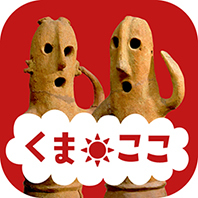令和3年度「地域観光資源の多言語解説整備支援事業」ー妻沼聖天山歓喜院聖天堂ー [その他]
令和3年度「観光庁地域観光資源の多言語解説整備支援事業」にて、妻沼聖天山及び熊谷うちわ祭などに関連した文化財の英語解説文が作成されました。今後、完成した解説文の媒体化に向けて準備を進めていく予定です。
完成した解説文の一部をご紹介します。
Shodendo Main Hall 歓喜院聖天堂
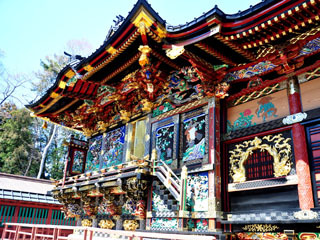
The Shodendo is the main building and the spiritual heart of Menuma Shodenzan Temple. The exterior of the hall is adorned with colorful carvings which depict Buddhist teachings and allegories, aspects of classical Chinese culture, and auspicious animals. These were designed to appeal to lay people. The main hall enshrines Shoden (or Kangiten), the deity of joy, conjugal harmony, and longevity, who is the Buddhist representation of the Hindu god Ganesha. The Shodendo is designated a National Treasure.
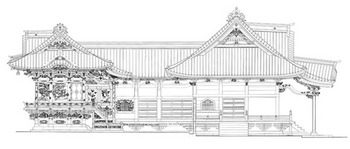
Lavish carvings
The main hall is three halls connected under a single roof: a hall of worship (haiden) at the front, an inner sanctuary (okuden) at the back, and an intermediate hall (chuden) in between. This style of architecture characterized by ornate carvings is known as gongen-zukuri. The style takes its name from Tosho Daigongen, the posthumous name of Tokugawa Ieyasu (1542–1616). He was the founder of the Tokugawa shogunate, which re-united Japan after centuries of civil war, and ruled Japan from 1603 until 1867. His ornate mausoleum at Nikko Toshogu Shrine in Tochigi Prefecture, built in 1635, is one of the most famous examples of gongen-zukuri architecture. The Shodendo is often compared with Nikko Toshogu Shrine for its lavish carvings and architectural style.
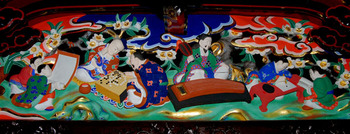
A wealth of color and detail
The roof gables are inset with colorful carvings, and the eaves and lintels are decorated with lions, tigers, and mythical creatures such as dragons. A carved frieze shows figures practicing the four classical accomplishments of ancient Chinese scholars: painting, calligraphy, playing the zither, and the strategy game of go. A similar carving can be found on the Yomeimon Gate at Nikko Toshogu Shrine.
The exterior walls of the inner sanctuary at the back of the main hall are likewise covered in detailed carvings. Layers of vibrant color and gilding enhance the striking appearance of the Shodendo and its carvings.
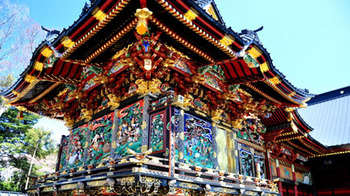
A legacy of craftsmanship
The construction and decoration of the main hall started at the back. As work progressed to the front, the decoration became simpler, likely because of lack of funds. For a small fee, visitors can walk around the back of the main hall to view the carvings more closely.
The Shodendo has been rebuilt several times since Menuma Shodenzan Temple was established in the twelfth century. The current main hall was completed between 1735 and 1760 and was funded entirely by donations from the local community. The cost was around ¥2 billion in today’s money. Master carpenter Hayashi Masakiyo (1678–1753) designed and oversaw the reconstruction with his son Masanobu (1736–1802), who completed the project after his father passed away. They came from a family of master carpenters who worked on prominent shrines and mausoleums during the Edo period (1603–1867), including the restoration of Nikko Toshogu Shrine. The main hall and its carvings were restored from 2003 to 2010.

※この英語解説文は観光庁の地域観光資源の多言語解説整備支援事業で作成しました。
完成した解説文の一部をご紹介します。
Shodendo Main Hall 歓喜院聖天堂

The Shodendo is the main building and the spiritual heart of Menuma Shodenzan Temple. The exterior of the hall is adorned with colorful carvings which depict Buddhist teachings and allegories, aspects of classical Chinese culture, and auspicious animals. These were designed to appeal to lay people. The main hall enshrines Shoden (or Kangiten), the deity of joy, conjugal harmony, and longevity, who is the Buddhist representation of the Hindu god Ganesha. The Shodendo is designated a National Treasure.

Lavish carvings
The main hall is three halls connected under a single roof: a hall of worship (haiden) at the front, an inner sanctuary (okuden) at the back, and an intermediate hall (chuden) in between. This style of architecture characterized by ornate carvings is known as gongen-zukuri. The style takes its name from Tosho Daigongen, the posthumous name of Tokugawa Ieyasu (1542–1616). He was the founder of the Tokugawa shogunate, which re-united Japan after centuries of civil war, and ruled Japan from 1603 until 1867. His ornate mausoleum at Nikko Toshogu Shrine in Tochigi Prefecture, built in 1635, is one of the most famous examples of gongen-zukuri architecture. The Shodendo is often compared with Nikko Toshogu Shrine for its lavish carvings and architectural style.

A wealth of color and detail
The roof gables are inset with colorful carvings, and the eaves and lintels are decorated with lions, tigers, and mythical creatures such as dragons. A carved frieze shows figures practicing the four classical accomplishments of ancient Chinese scholars: painting, calligraphy, playing the zither, and the strategy game of go. A similar carving can be found on the Yomeimon Gate at Nikko Toshogu Shrine.
The exterior walls of the inner sanctuary at the back of the main hall are likewise covered in detailed carvings. Layers of vibrant color and gilding enhance the striking appearance of the Shodendo and its carvings.

A legacy of craftsmanship
The construction and decoration of the main hall started at the back. As work progressed to the front, the decoration became simpler, likely because of lack of funds. For a small fee, visitors can walk around the back of the main hall to view the carvings more closely.
The Shodendo has been rebuilt several times since Menuma Shodenzan Temple was established in the twelfth century. The current main hall was completed between 1735 and 1760 and was funded entirely by donations from the local community. The cost was around ¥2 billion in today’s money. Master carpenter Hayashi Masakiyo (1678–1753) designed and oversaw the reconstruction with his son Masanobu (1736–1802), who completed the project after his father passed away. They came from a family of master carpenters who worked on prominent shrines and mausoleums during the Edo period (1603–1867), including the restoration of Nikko Toshogu Shrine. The main hall and its carvings were restored from 2003 to 2010.

※この英語解説文は観光庁の地域観光資源の多言語解説整備支援事業で作成しました。
2022-03-07 14:12
コメント(0)
